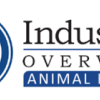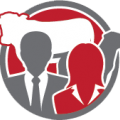Recent Posts
- Cultivating A Champion Culture: Balancing Performance and People in Animal Health
- How Stable are Earnings in Animal Health? Results of the Animal Health Jobs 2025 Salary Survey
- Entry Fees for the Race for Talent: Results of the Animal Health Jobs 2025 Salary Survey
- Looking In The Gift Horse’s Mouth: The Pros and Cons of Counteroffers in Animal Health
- Beyond the Hire: Why Animal Health Needs More "Relationshipping," and Less Recruiting
Most Popular
-

Entry Fees for the Race for Talent: Results of the Animal Health Jobs 2025 Salary Survey
-

News to Know from Brakke Consulting’s 2025 Animal Health Industry Overview
-

How Stable are Earnings in Animal Health? Results of the Animal Health Jobs 2025 Salary Survey
-

Cultivating A Champion Culture: Balancing Performance and People in Animal Health
-

How Will Artificial Intelligence Change Jobs In Animal Health?
Get the most out of our extraction tool by creating a web-ready resume

Computers are not smart.
We've come a long way technologically, but automated systems like resume parsing are still no match for human logic. Keep your electronic resume as simple as possible. Things like headers, font styles, and differences in text size are irrelevant to the computer. Likewise, tabs, tables, and columns can confuse software programs, which read line by line.
Ready to create a web-optimized resume? Here are some key things to remember.
Do:
- Put your contact information first
- Use line breaks or tabs to delineate information
- Keep the order of information consistent
- Use a standard font face, such as Arial
- Use clear headings like "Work History" and "Education"
- Save as a MS Word document
- Keep it simple
Don't:
- Use tables or columns
- Use headers or footers
- Use images or graphics
- Use different font faces or styles
- Use non-standard fonts
But what about the visually appealing resume you painstakingly built, the one that not only details your career history but actively demonstrates your ability to wrangle Microsoft Word? It still has a use! Keep this copy for sending directly to hiring managers, and upload it to your Animal Health Jobs profile as an additional resume. Employers can download this file directly when you include yourself in our searchable database and when you apply for open positions.


Comments